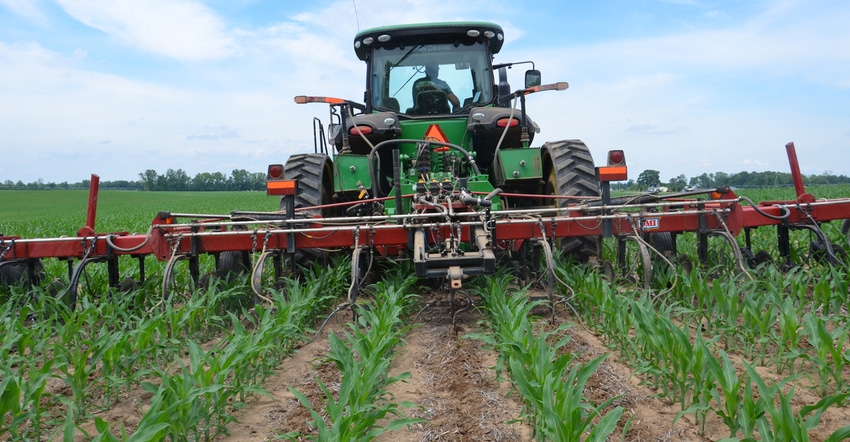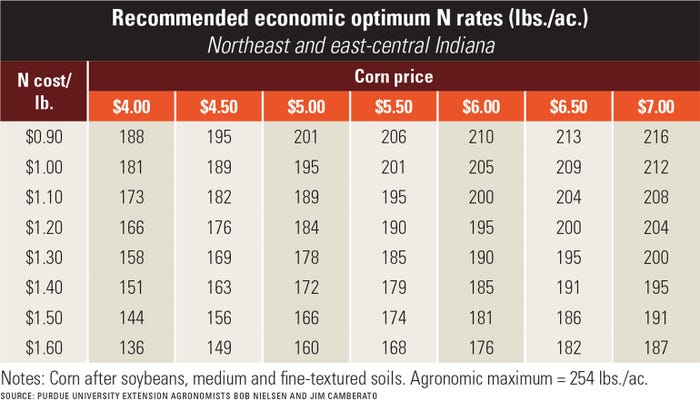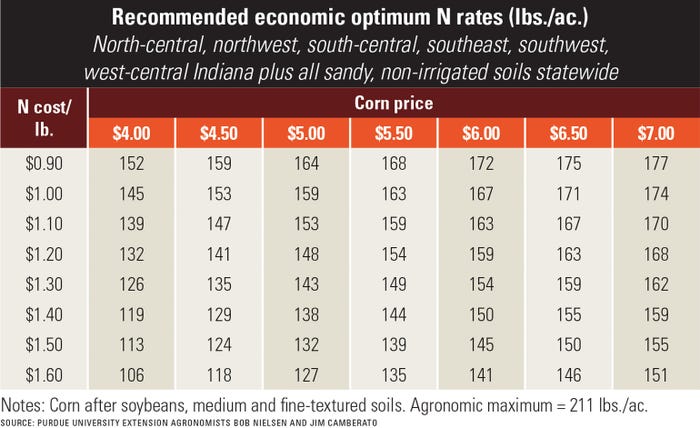
With both historically high fertilizer prices and high corn prices, the spotlight is on nitrogen rates this year. Sidedressing could be your final opportunity to adjust nitrogen rates.
Your recommended rate will vary based on N cost and corn price, but it also depends heavily on where you farm.
“We’re recommending following the law of diminishing returns, and choosing the economic optimum nitrogen rate, or EONR,” says Jim Camberato, Purdue Extension specialist. “That will certainly be lower than the agronomic maximum N rate tied to producing the most bushels per acre.”
The EONR will always be lower than the agronomic maximum rate, Camberato says. But both the EONR and agronomic maximum vary greatly across Indiana. Even if you pay the same price for N as your relative on the other side of the state, and you both expect the same corn price, you may set your applicators very differently, just because your soils and environments are different.
Camberato and Bob Nielsen, a Purdue Extension corn specialist, updated tables showing EONR rates at various nitrogen costs and corn prices. They developed three tables, based on dozens of field-scale trials conducted in Indiana dating back to 2006. Find the complete tables online. They are also listed below.
Note how much recommended EONR varies by location, even for the same N costs and corn prices:
Example 1. Central Indiana. Assume nitrogen costs $1.20 per pound and corn is $6 per bushel. The EONR in this geography, based on 23 trials, is 178 pounds per acre. At $1.40 and $7, it’s also 178 pounds per acre.
These examples assume corn following soybeans on medium and fine-textured soils, Camberato adds.

Example 2. Northeast and east-central Indiana. For $1.20 N and $6 corn, the EONR is 195 pounds per acre, and at $1.40 and $7, it’s also 195 pounds per acre. Numbers are based on 37 trials with the same assumptions as above. Note that location alone bumps rates 17 pounds per acre vs. central Indiana.

Example 3. North-central, northwest, south-central, southeast, southwest, west-central Indiana, plus sandy, non-irrigated soils statewide. At $1.20 N and $6 corn, the EONR here is 159 pounds per acre, and is also 159 pounds per acre at $1.40 N and $7 corn. It’s lower than in central Indiana, and much lower than for northeast or east-central counties.

About the Author(s)
You May Also Like




